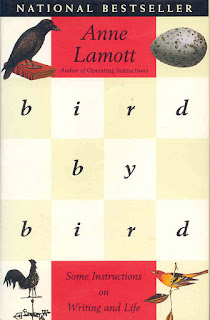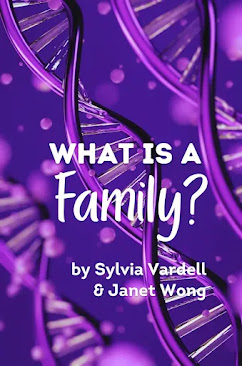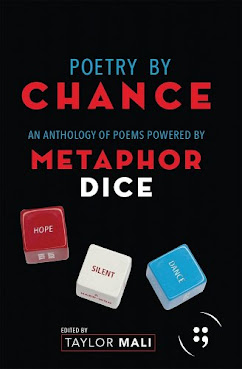You remember the first week or so of each grade in elementary school was always "review time?" Those easy A's for simply remembering the stuff you were supposed to have learned last year? That's how I still think of fall, a time of review and re-assessment of my writing, before moving forward. This year, however, my work didn't need review so much as my mind needed a good jumpstart.
My brain went on vacation sometime last spring, and I don't mean it was in a hammock somewhere in the Caribbeans, sipping Pina coladas. It's been jammed to the gills with more than usual day-to-day stuff, and the toxic mental environment of the country. My head felt like I'd eaten nothing but stale potato chips for months. Time to send the brain back to school...tuition free.
I've always secretly believed The Answer to Life is in books. I'm still looking for that particular book; it's out there somewhere. Meanwhile, there are my "old friends" books...the ones I return to over and over for their sane advice.
My number one go-to book is, and always will be, Bird by Bird by Anne Lamott. Although I've never heard her speak, I can somehow hear her as I re-read my favorite parts marked with Post-It's and the occasional Cadbury bar wrapper. She reminds me writers are full of self-doubt, no matter how successful. Each new project comes with a new set of fears. The writing never gets easier. First drafts always suck; that's what first drafts are for. I think of Anne as a kind of writer's therapist. And unlike my actual therapist, I haven't paid Anne anything since 1999 when I bought the book.
After Anne bolsters my spirit, I move on to What's Your Story: A Young Person's Guide to Writing Fiction by Marion Dane Bauer. Marion was one of my mentors in the Vermont College MFA program, and this was her textbook. Don't let the title fool you. It's anybody's guide to writing fiction, regardless of age. If there is such a thing as a blueprint for story building, this is it. Again, I hear Marion's voice on every page, because in this case, I actually know how she sounds!
Marion and I have totally different writing styles; hers' spare, minimalist, not one word more of
description or backstory than the story requires. My first drafts remind me of an ice cream concoction that Baskin Robbins once called "The Kitchen Sink": a Matterhorn of many ice cream flavors, sauces, nuts, sprinkles, assorted crunchy "things," topped off by a cloud of whipped cream and multiple cherries. Over and over as I edit my own work, I hear Marion's voice. "Why is this...(character, scene, description, flashback) here? How does this move the story along?" In my critique groups, I have shortened this question to HDTMTSA. My fellow critiquers know they have wandered afield when they see that.

Lastly, my oldest "friend" Julia Cameron. I've "known" her longer than the other two. We "met" when her book The Artist's Way came out in 1992, around the time I first began writing seriously. Julia taught me how to shake up my creativity, and to stop thinking so hard. I learned to observe more closely, use my mad eavesdropping "skills" for good not evil (!) and to find another creative outlet in addition to writing. I spent a lot of "artist dates" with my trusty old, pre-digital Canon camera.
Julia has spun the Artist's Way concept every which way she can into a multitude of books--for kids, for parents, for "older" people, for "transitioning" people (transitioning into becoming "older") and her latest...for dieters. Two of my favorite subjects in the same book--dieting and writing! The book boils down to a series of different kinds of journals for dieters. I hate diet journaling. And I've "regular" journaled my whole life. However, she came up with a new journal that helped vacuum out the toxic sludge that filled my brain...The Life Story Journal.
The Life Story Journal is not for publication, writing practice or even especially for generating writing ideas. I've fictionalized my own life and family in nearly everyone of my books. In doing so, I have sometimes forgotten what "the real story" is. Julia's idea is to go back as far as you can remember...and write down everything you can remember. For someone my age whose first memories start at age 3, that's pretty intimidating...and laborious. I also never write anything in sequence. So I've picked random years to write about. Not in any sort of prose...just images, flashes of events, people, descriptions....whatever flotsam and jetsam I find attached to 1957 or 64 or 2001. By consciously not looking for story ideas, they come easily from this no-strings attached method of recounting memory. Lots of junk there too...but lots of good stuff, too.
 |
| 1963--What do I remember? I'm the one in the maroon dress. |
Lastly, I read something new and challenging after a summer of reading adult fiction (which I rarely do) that all seemed alike to me, and formulaic children's stories. My choice, the latest book by an actual friend. An Na was in the Vermont College program the same time as I, so I was privileged to hear early version of her Printz Award winner, A Step from Heaven. Her style is so precise, her stories could've been written with a diamond pen....chiseled on to glass, each word exactly right. She is not a prolific writer, so when I learned her new book would arrive March 2018, I pre-ordered for my Kindle...and promptly forgot it was there. (I have an ungodly amount of stuff on my Kindle).
I believe The Space Between Breaths will become a classic for the 21st century. The book is short, the premise seems simple. Grace, a high school senior, has never given up hope that her missing schizophrenic mother will some day come home. Her remote researcher father is consumed with finding a cure for this disease.
That's where the simple part ends...somewhere around page three. An Na takes the use of the unreliable narrator to a new level...or does she? Who is the narrator? Is there more than one? Where are we in time? Is it now, the past or a flashback dodging in and out of the present? I suspect that there are as many perceptions of what happens as there are readers. I have gone back and back, and with each reading, I find more subtle hints that all is not as it appears. How did I miss these the first time? Why? Because the author fools us into thinking this is a straightforward teen-missing-mom story until it is too late...the reader is already invested in Grace when we also begin to question her.
So having visited old friends for counsel, inspiration and example...it's back to work I go.
School is in!














2 comments:
Thank you for this great post, Mary Ann! Like you, I find autumn and "back to school" time the perfect opportunity to refocus. I've just finished final edits on my upcoming novel and I'm taking a couple of hours this morning to tidy my library, desk, and email inbox. As I work, I'm setting aside by own "stack" of book friends (both physical and electronic)to offer support and new ideas and perspectives as I get back to work on the next project.
MA, I didn't know Cameron had a diet book, or that An Na had a new book. I'll have to check out both of them. Thanks for sharing!
Post a Comment